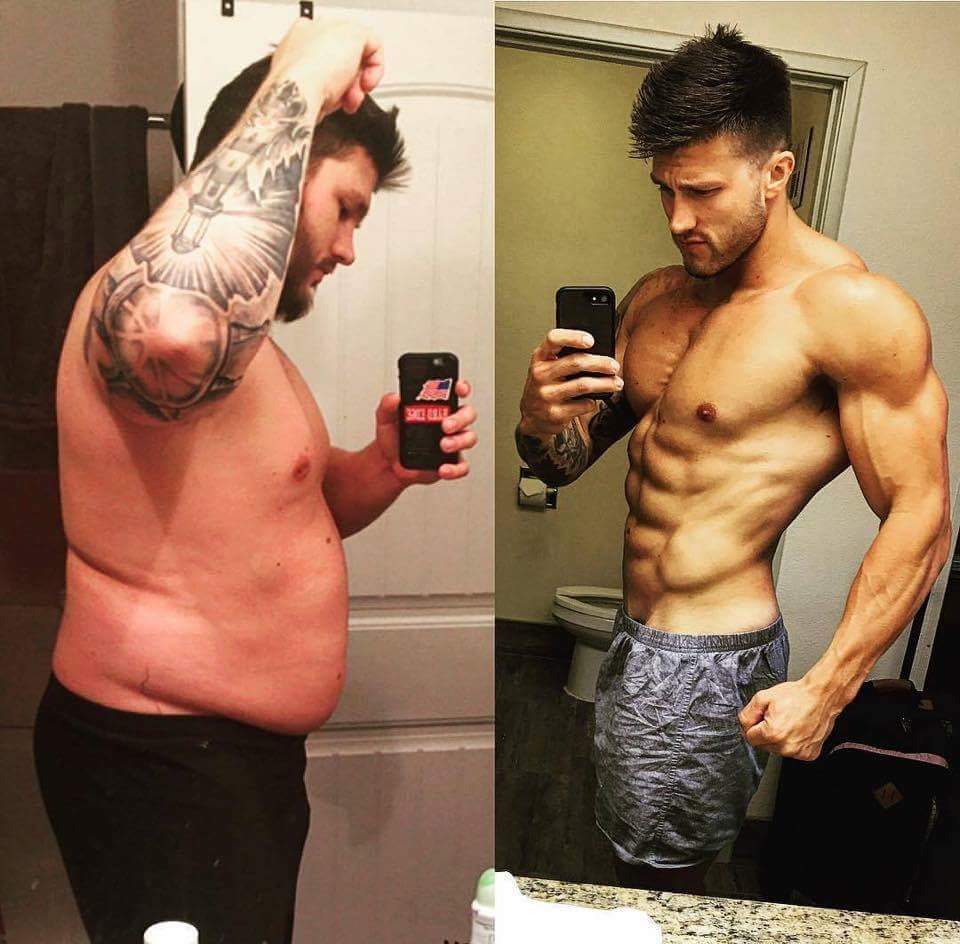Contents

In reality it’s actually pretty simple, there’s only a few basic things to keep in mind. If you follow them then you likely won’t lose much muscle if any at all. Especially if you’re a beginner, in which case you might actually be able to re-comp to gain some muscle while you’re losing fat.
Basically you have the training side and you have a nutrition side. For the training, the main thing is make sure that your weight training approach remains the same as it was when you were trying to gain muscle. You can reduce the overall volumes slightly.
A lot of people make the common mistake of switching to a lighter weight higher rep program thinking that it can improves fat loss or that it brings out more definition in their muscles, but this is completely false. You can’t spot-reduce fat loss from specific areas of your body. Light weight-high rep sets isn’t doing anything other than weakening the overall stimulus of your training.
If you really want to lose fat and without muscle loss then you need to continue training hard, training heavy and striving for progressive overload to make sure your body is receiving a strong enough stimulus to prevent existing muscle loss while being in a deficit.
Your diet and your cardio is going to take care of the calorie burning aspect. You’re only goal in the weight room should be to provide your body with the most powerful stimulus that you can so that it has the proper incentive to hold on to its muscle.
Tips: when training don’t start reducing you rest time in-between sets as a way to try and burn more calories.
You do that by training with the same basic principles that you were using when trying to gain muscle. Train within a rep or two of failure on your sets and staying within that basic hypertrophy rep range of about five to twelve reps per set.
The other thing to keep in mind on the training side is to not go overboard on cardio. We recommend performing some cardio whether you’re bulking or cutting because it does have a variety of physical and mental benefits outside of just burning calories. You don’t need to be doing cardio every day like a marathon cardio sessions. Just start off with a moderate amounts. Two to three sessions per week in combination with weight training is a good starting point and ideally tried to space it away from your weight training workouts if you can.
So either cardio on the morning and weight training at nights or weight training in the morning and cardio at night or just flip them on separate days altogether. If you just want to be as time efficient as possible then always do it post workout, don’t do cardio before your weight training workouts.
Weight training should always take precedence over cardio if you’re trying to maximize muscle retention. You don’t want to pre-fatigue yourself prior to weight training as a result of doing cardio.
The first thing is to stick with a moderate calories surplus and to focus on losing fat at a gradual pace. Usually 1-2 pound per week guideline is a good overall rate for most people. Unless you’re significantly over weight you can go a bit faster than that.
Larger more aggressive calorie deficits are okay in the short term but most people won’t be able to stick to them for very long before their training performance will start to suffer, mood and energy levels will go down and your chance of losing muscle will surely increase as a result.
In most cases go with a standard 500 calorie below maintenance deficit to start off with and take things at the more gradual pace. Doing it this way will make you feel better, you’ll get better workouts, your chance of sticking to your fat loss guide will hugely increased and you will be more likely to retain the majority of your muscle mass.
Aside from basic calorie intake, you want to make sure that you’re getting a sufficient amount of daily protein and fat. That’s easy to do with some proper planning. Anywhere from 0.8 to 1.0 gram of protein per pound of body weight daily that’s likely going to be enough to lose fat while maintaining muscle.
If you just want to be on the safe side then just go with 1.0 gram per pound of body weight will guarantee you’re getting enough protein.
When it comes to fat you want to make sure that you’re getting enough of that, so that your testosterone levels and your mood remain elevated. A good figure for that is to get around 25% of your total daily calories from fat. We wouldn’t recommend going below 20% for any extended period of time.
Those are really all the main point that you need to know if your goal is to burn fat and maintain muscle effectively.